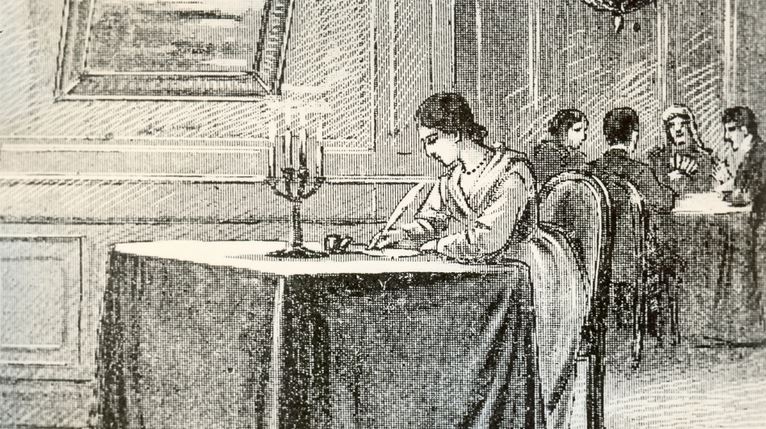
The Teenager who Kickstarted the Modern Mission Movement
For the hundreds of people who found a way to support the missions through soon-to-be Blessed Pauline Jaricot, there was a dominant channel of connection with the missionaries: Pauline’s brother, Phileas, a Sulpician missionary priest.
The letters that went back and forth from Pauline, in France, to Phileas, in his various missionary endeavors in Asia, included the stories of the missionaries’ sacrifices and successes, and the mention of their needs.
The faith of the missionaries and those finding a home in the Church through their ministrations, was in stark contrast to the drab secularism the young Frenchwoman and her coworkers and friends faced around them.
The faith of these men and women in Asia was alive and intense, and yet it needed the support of Pauline and her friends from Lyon – their prayers, of course, and, at least, their pennies.
And thus began the Society for the Propagation of the Faith, now known as the Pontifical Mission Societies. It was 1822 and it wasn’t long before this young laywoman’s vision became a channel for the pope’s own support of the Church’s mission work, and the Societies becoming “pontifical.” Early help from their efforts also reached the young and growing Church in the United States and everywhere in the world!
Today, the Pontifical Mission Societies in the United States in has a digital presence through MISSIO.
MISSIO, reflects Monica Yehle, who has been the communications director for the Mission Societies for 33 years, “was baked into Pauline’s vision.”
Today, MISSIO provides us all the chance to read, as it were, Phileas Jaricot’s letters. But even more than that, it gives us a chance to “see yourself in the picture,” as Yehle puts it.
“Pauline was a crowdfunder, before anyone ever used that phrase,” Yehle reflects. “MISSIO that you see today is based on Pauline’s vision. … She was this young teenage girl in France and now … it plays out in this ‘meeting’ experience, this ‘encounter’ experience.”
We might know that our baptism has made us all missionaries. “But what does that mean?,” Yehle asks. MISSIO helps to give the answer.
First is our connection to the mission with prayer, because “prayer is a transcendent thing. You’re connected to the missionaries,” Yehle said. “You meet them in prayer, as one missionary Sister once said when I interviewed her.”
But it’s also “a place of encounter,” as Yehle explains:
MISSIO is not just a place you go to give money. Yes, that’s important. But you meet these people. You know these people. These sisters, priests, and lay leaders. … Sister Claudine in Madagascar answers you. Brother Paul in Kenya provides an update on his work, and so many others.
Blessed Pauline’s vision developed through MISSIO expands her ability as a young French laywoman of the early 19th century. Now, her “coworkers” today are enabled to reach more people and develop relationships across borders of distance and language.
Such connection is more relevant than ever in our day, as we face together a worldwide pandemic.
“During the pandemic we’ve been able to see how [the missions are] coping. To realize [the virus is] a global issue. We were seeing it. And to see them coping with it with fewer resources,” Yehle noted.
Browse the work of the mission Church at MISSIO United States here.